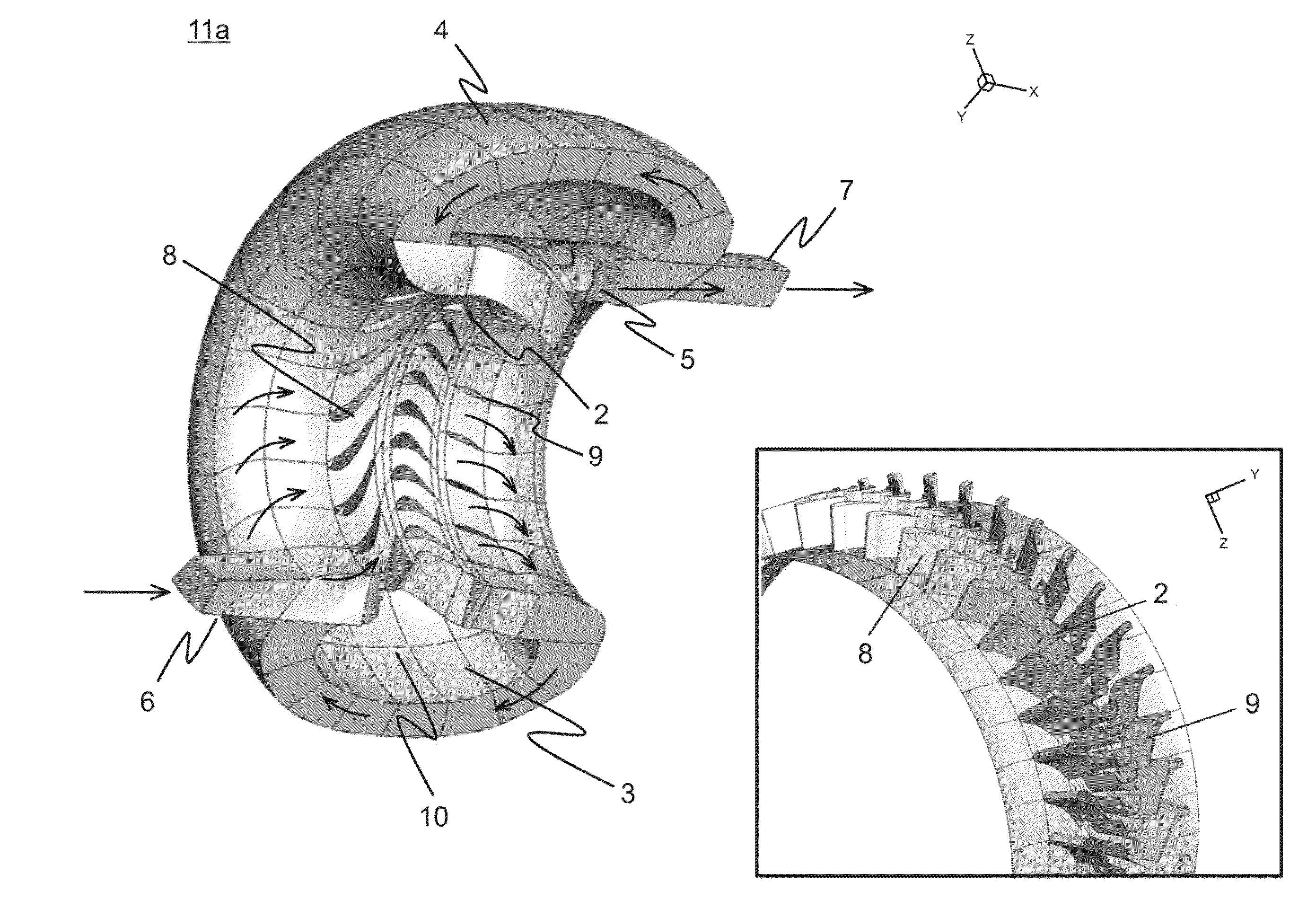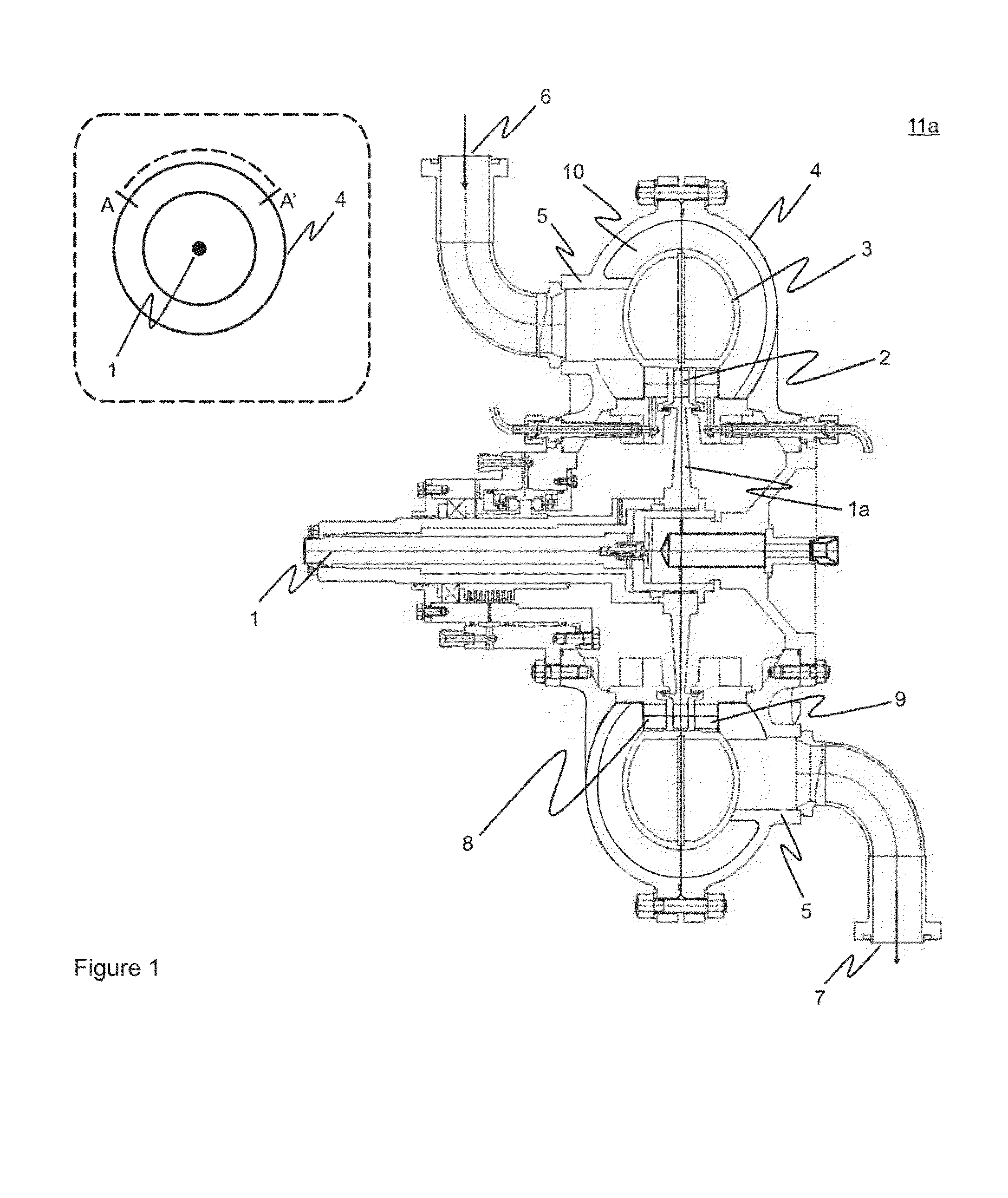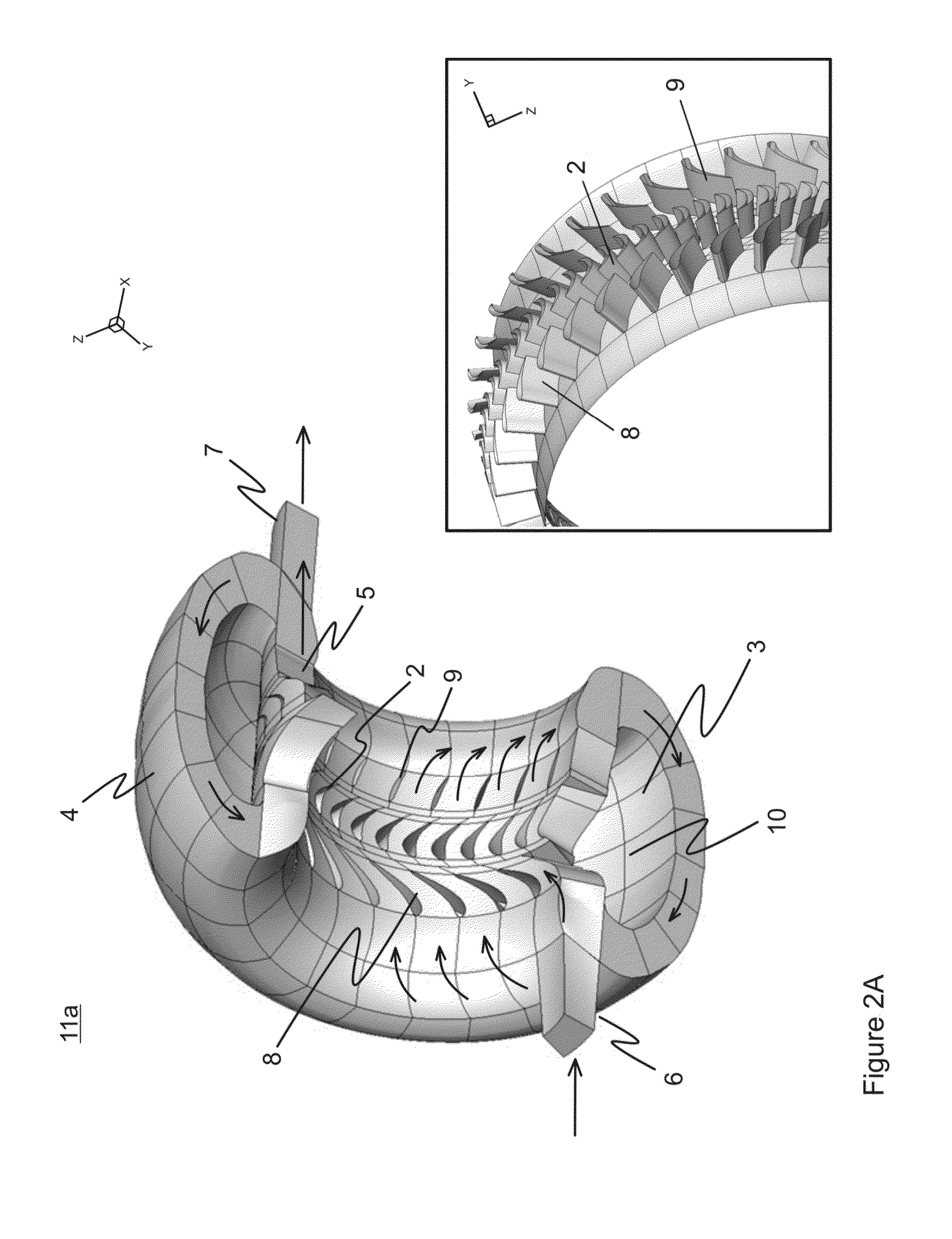Process and rotary machine type reactor
a rotary machine type, process technology, applied in the direction of thermal non-catalytic cracking, ultra-high pressure processes, liquid hydrocarbon mixture production, etc., can solve the problems of hardly satisfactory modern requirements of cost-effective feedstock utilization, inability to increase reaction temperature, and feedstock residence time, so as to overcome limitations in heat supply speed and yield the desired pyrolysis product. , the effect of reducing pressur
- Summary
- Abstract
- Description
- Claims
- Application Information
AI Technical Summary
Benefits of technology
Problems solved by technology
Method used
Image
Examples
example 1
[0102]Test drive for an exemplary helical-path reactor assembly in comparison to conventional tubular pyrolysis furnaces of different manufacturers.
[0103]The small-capacity model of the helical-path reactor was developed and manufactured to evaluate technical feasibility of a new pyrolysis process in test drive conditions. In order to perform experiments a test stand was constructed. The major objective of testing series was obtaining data on pyrolysis product yield and composition. The model reactor was thus equipped with a 90 kW electric motor with a step-up gearing to drive the rotor. Technical features of the model reactor were as follows: volume of a reaction zone: 2×10−3 m3; rotor rotational speed: 18,000-20,000 rpm.
[0104]Process conditions settings during test-drives of the model reactor were similar to that usually utilized in reactors of commercial scale: temperature of pyrolysis reaction was about 900° C.; feedstock residence time in reaction zone was 0.025-0.030 sec; and ...
PUM
 Login to View More
Login to View More Abstract
Description
Claims
Application Information
 Login to View More
Login to View More - R&D
- Intellectual Property
- Life Sciences
- Materials
- Tech Scout
- Unparalleled Data Quality
- Higher Quality Content
- 60% Fewer Hallucinations
Browse by: Latest US Patents, China's latest patents, Technical Efficacy Thesaurus, Application Domain, Technology Topic, Popular Technical Reports.
© 2025 PatSnap. All rights reserved.Legal|Privacy policy|Modern Slavery Act Transparency Statement|Sitemap|About US| Contact US: help@patsnap.com



